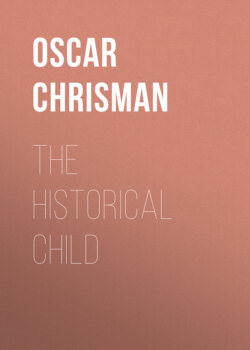Читать книгу The Historical Child - Oscar Chrisman - Страница 44
На сайте Литреса книга снята с продажи.
Sickness and Death.
ОглавлениеTable of Contents
It would appear that the study and practice of medicine began at a very early time in Egypt. Principles and remedies were given out from time to time till finally they were brought together in the form of medical works and all physicians were expected to study them and to use the prescribed remedies. The medical skill of the Egyptians became known to other parts of the world and they were consulted and called to foreign countries to give advice and treatment. They went so far as to divide the study and practice of medicine into specialties and so there were physicians attending to one kind of illness only, as, one for the diseases of the eyes, another for the diseases of the intestines, and so on, accoucheurs having been usually, if not always, women. The physicians were given salaries by the government and fixed by it and also they were permitted to receive fees for their advice and attendance upon patients, but when in military service they could not charge fees.
On account of the glaring light and the sandy plains and the overflow of the Nile, some of the prominent troubles were of the eyes and such as were connected with malaria. In treatment of illness, it was held that the patient had been attacked by some evil influence, hence to cure him was first necessary to find what was the nature of this evil spirit and to drive it out or to destroy it. This was the task of those skilled in sorcery, through incantations, amulets, and the like. Then the diseases that had been carried into the body by the evil influences were to be cured by medicine and medical treatment. Physicians were held responsible for their treatment of a disease and if contrary to the established system they were punished and the death of a patient under such circumstances was considered a capital offense. Yet if they had exhausted all the prescribed remedies without producing good effect, they could prescribe new remedies and hence an opportunity for advancement in the science of medicine. In their practice they strove to prevent illness by directing attention to regimen and diet; they purged the system by use of emetics or clysters; and they used drugs and medical herbs.
When a death occurred, all the women of the household covered their faces with dust and mud and with bosoms exposed ran out through the streets, striking themselves and uttering loud cries of grief. Friends and relatives joined the procession and the demonstrations became the louder. If the deceased person had been of wide repute, many other people went into the line of mourners and hired mourners were employed to increase the lamentations and thereby enlarge the public display of respect to the dead. For seventy-two days the mourning was carried on in the house, lamentations were made, the funeral dirge was sung, all amusements and indulgences were abstained from, and the men allowed their hair and beard to grow. Thus they endeavored to show respect to the deceased and their great affliction by his departure.
One of the great arts of the ancient Egyptians was that of embalming. It constituted a distinct profession. The embalmers had wooden models of mummies, displaying the three different ways of embalming. The first way of embalming was very expensive and was used only by the wealthy class and people of high position; the second way was more simple and quite less expensive and used by the middle class of people; the third way was very simple and very cheap and employed by the lower classes. After embalming the body was returned to the family and put into a case and placed in a room upright against the wall, and sometimes they were retained by the family for quite a while before their burial.
When the time for burial came, the mummy was put into a coffin of wood or stone to be placed in a tomb, which may have been hewn in the rock or built up of brick or rock and usually on the western side of the Nile. Some of the tombs were of great extent and highly ornamented with paintings and sculptures and some were immense structures. The pyramids were built for tombs. The funeral of any important personage was a great occasion. There was much display and much noisy lamentations and it was very costly. Upon reaching the Nile the body was placed on the funeral barge and the procession went out on the river to the lake of the dead. Before the deceased could be taken across the lake for burial he had to meet the tribunal of death. Forty-two judges were at the bank of the lake and any one could bring accusation against the deceased. The judges considered the accusation and acted upon it and if the decision was acquittal then burial in the tomb took place, but if the accusation was sustained burial was denied. The judgment was carried out on the body of any person in the country, high or low, rich or poor, the meanest subject or a Pharaoh, and there are instances of deceased Pharaohs having been denied public burial.
"All the legitimate tendencies exerted by this singular institution were obviously for good. It sent forth from the very entrance of the tomb a most powerful persuasive to live a life of virtue. It appealed to some of the strongest of human motives, and enforced that appeal by the severest of all sanctions, the exclusion of the body from its sepulchre, and of the soul from the abodes of the blessed. It is not a little singular that a custom apparently so salutary, and so early introduced, should not afterwards have been adopted by other nations."45
